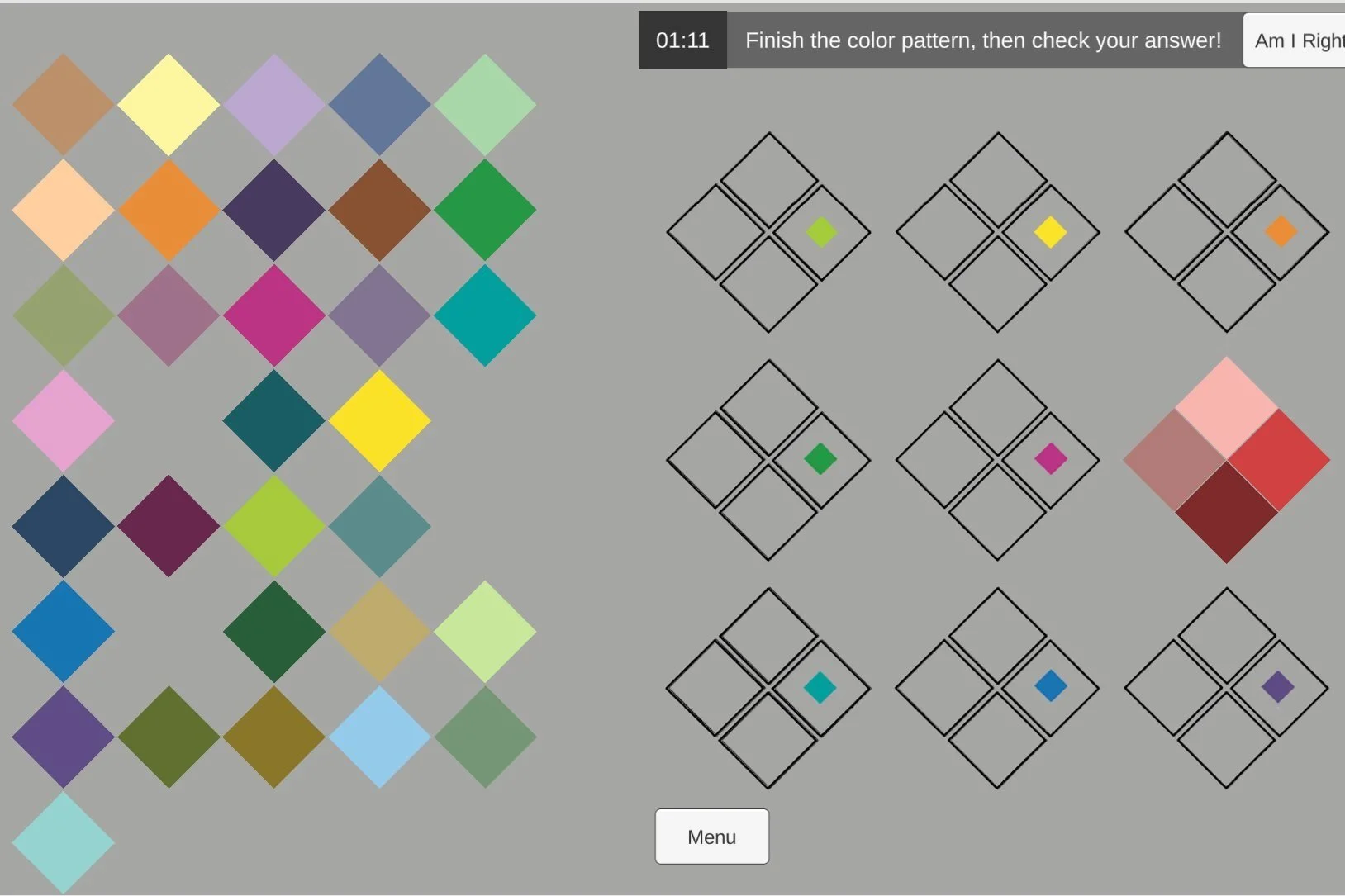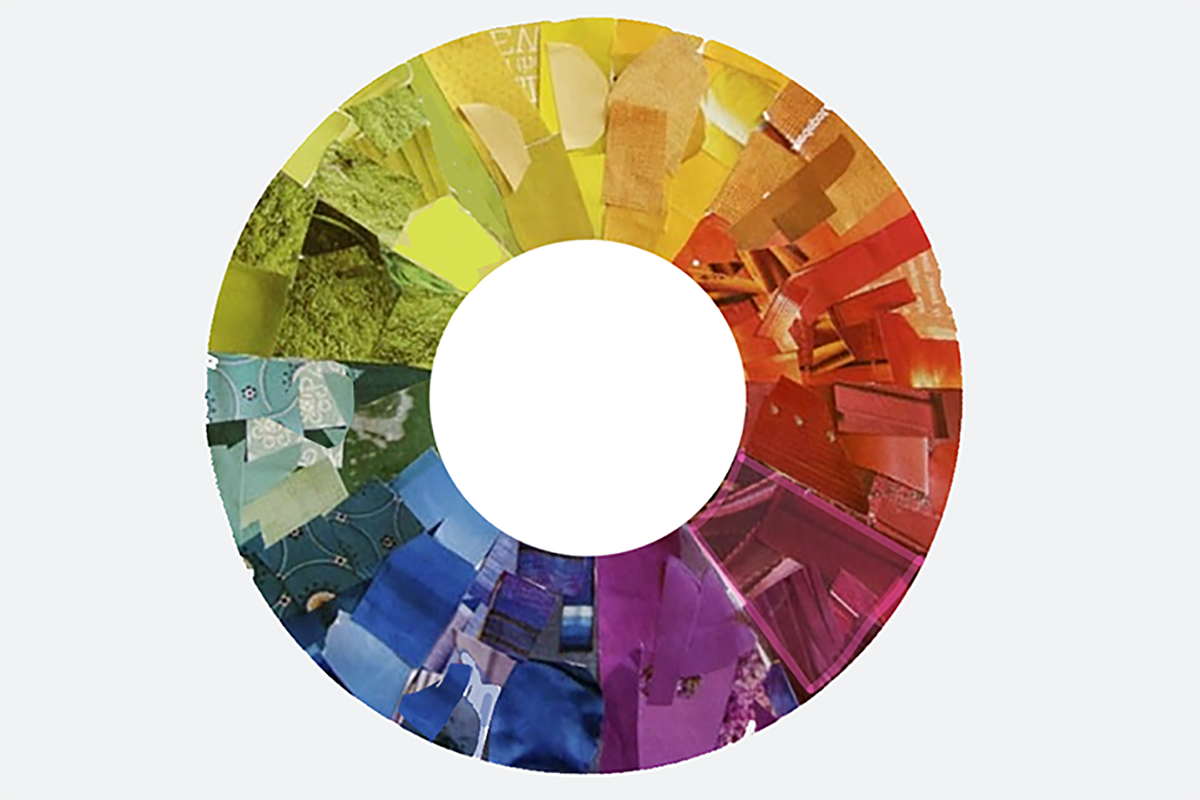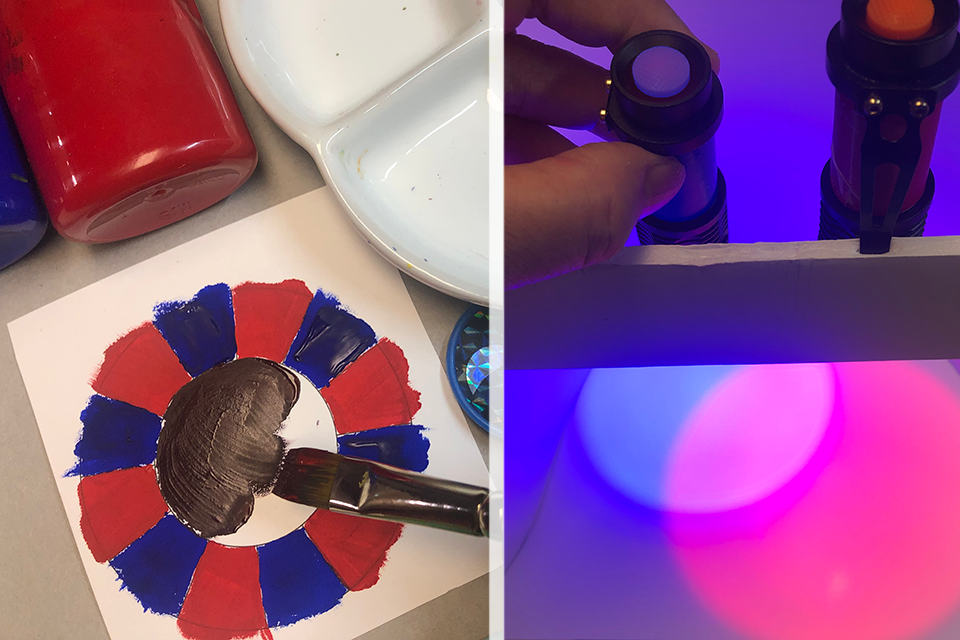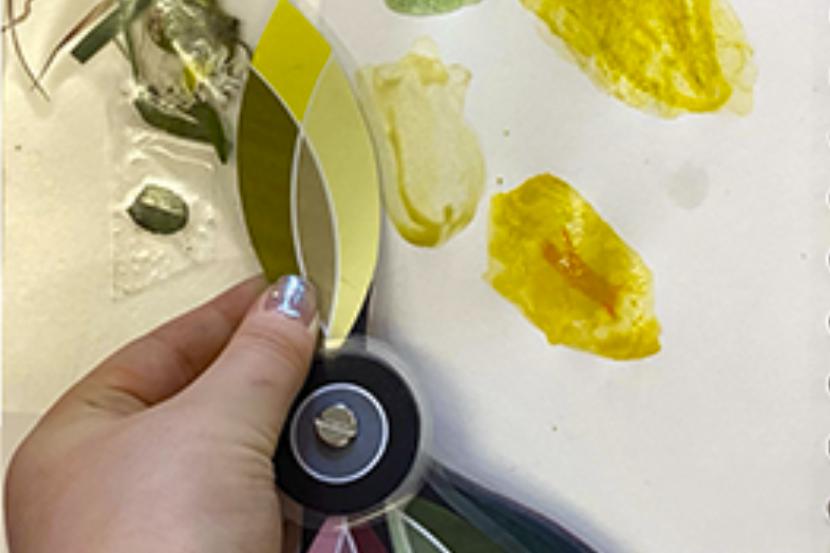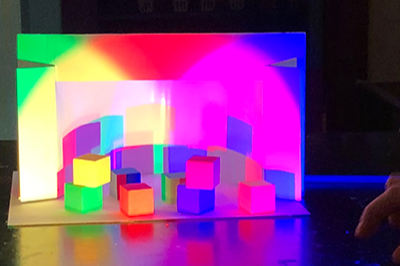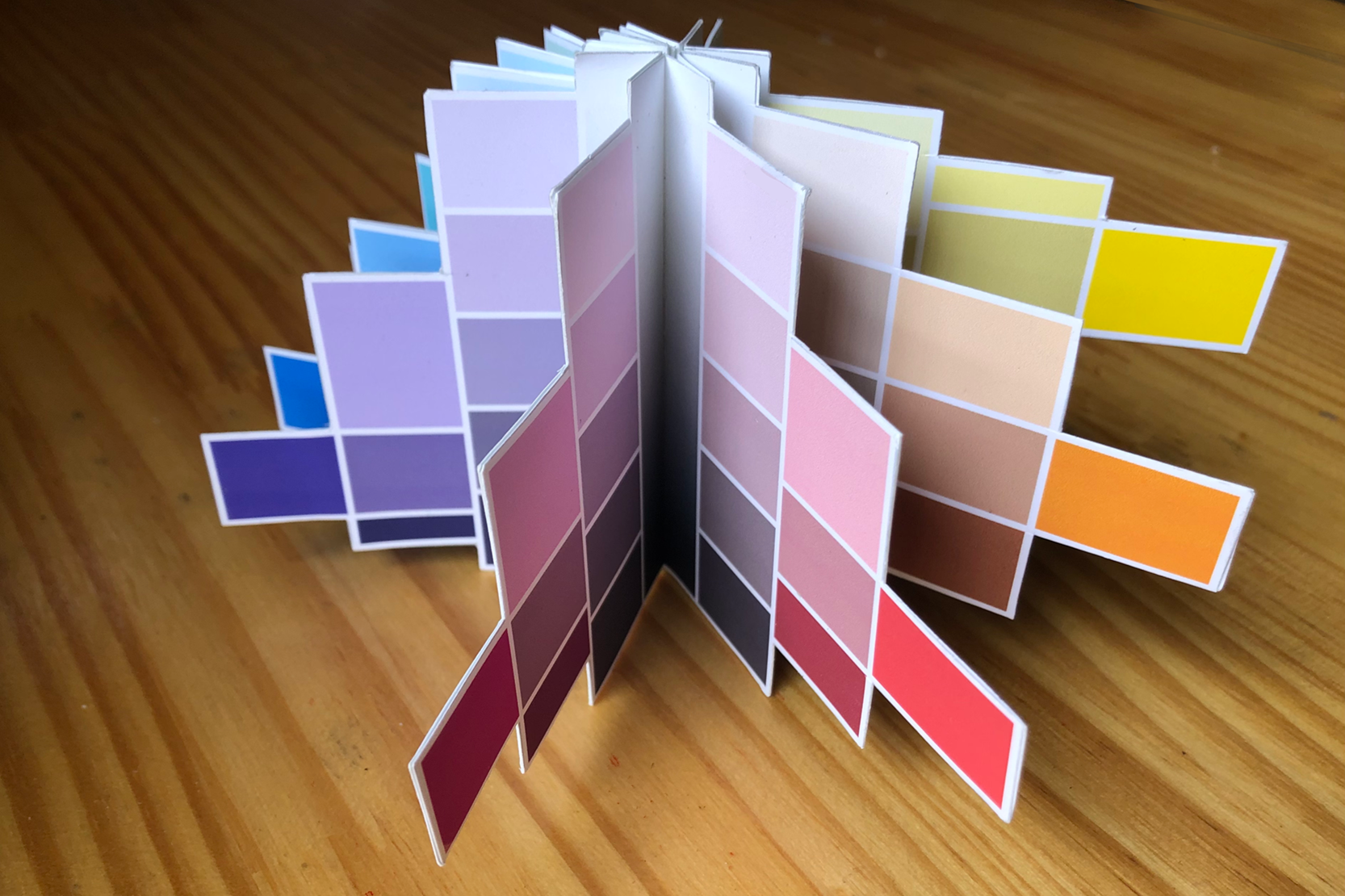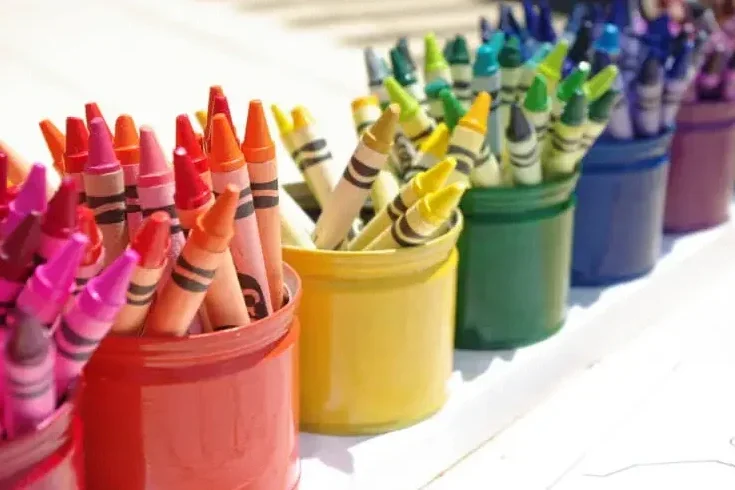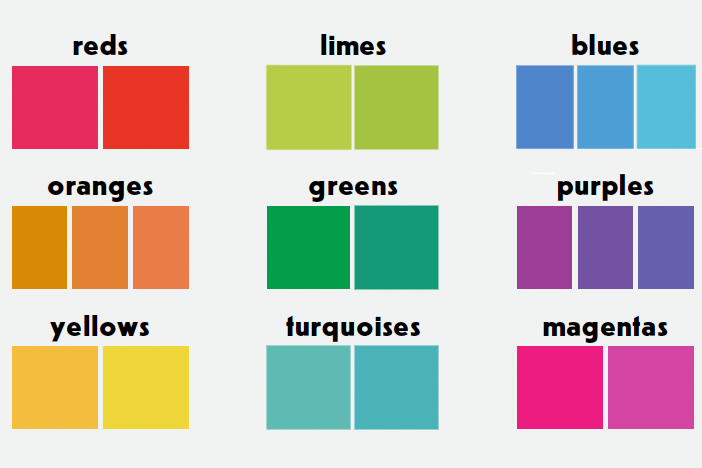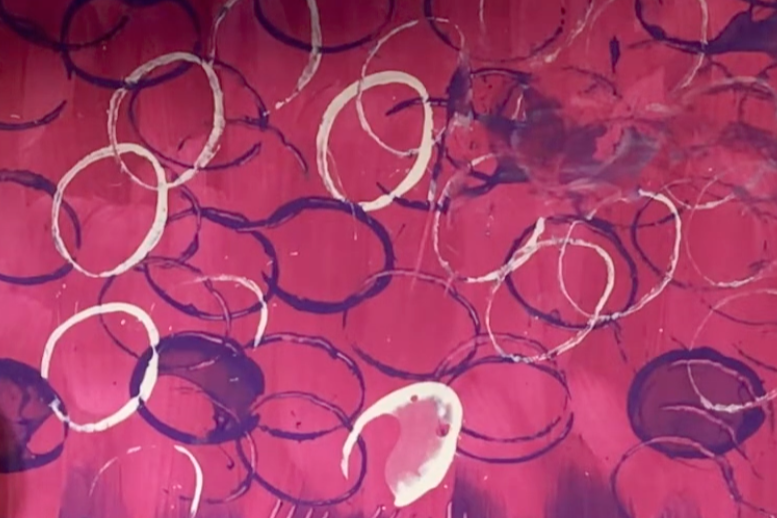Welcome to the Colour Literacy Project (CLP)!
We are currently beta-testing our exercises. Our goal is to gain insight and feedback related to the exercises’ effectiveness in expanding students' understanding of:
The fundamental role of colour in our lives.
The foundational core concepts across disciplines.
The results of the beta-testing will help us refine the curriculum based on experiential usage data. Once this beta-testing period concludes, the CLP will make the curriculum available as an open resource for educators around the world to freely use in their teaching and research.
If you are a teacher interested in beta-testing the exercises during the 2025-2026 school year, please join the CLP Partner Network, so we can connect with you!
ABC’s of Colour Literacy
Building a Universal Foundation
The CLP foundational curriculum consists of three units which can be done back to back or spread out over the year depending on where color fits into your curriculum planning.
Unit A - All About Hues
Unit B - From 2D to 3D
Unit C - Colour Interactions
Each unit consists of scaffolded, hands-on lessons introducing core concepts from science, language, and the arts. Each lesson includes one or two key exercises intended to be covered in a 30 minute class period. The supplementary exercises and practice/projects can be done in class or at home to help reinforce the lessons.
Note: All the exercises can be modified to make them age appropriate for your students. We welcome your suggestions for variations on the exercises depending on age and abilities.
Beta-Testing Exercise List
2025-2026
Unit A
All About Hues
Unit A - Lesson 1 - Science
The Rainbow and the Spectrum
(Where is Magenta?)
Cornerstone: Perceiving Colours
Core Concept: Colour is a perceptual experience.
Introduce the connection between light and colour.
Find Magenta!
Key Exercise
Examining the spectrum
How many colours are in the rainbow? If your response is ‘seven’ - take a closer look! What’s missing?
Key Exercise
Exploring the spectrum
Create a spectrum, and see how many hues you can find! Can you find Magentas?
Supplementary Exercise
Playing with Polarization
Create colourful compositions with polarized light
The Science of Colour Perception.
Hansen, Calder, 2016.
Video Length - 4:54
How Rainbows Form
Physics Girl
Video Length - 3:54
Magenta: The colour doesn’t exist?
BBC
Video Length -4:09
Unit A - Lesson 2 - Language
Hue Families and Hue Circles
Cornerstone: Describing Colours
Core Concept: Hues are arranged in a natural order based on the spectrum.
Introduce the Hue Circle and Hue Families.
Supplementary Exercise
Colour Naming Game
Fun introduction to the difficulty of describing colours.
Key Exercise
Arranging hue families
Use the CHROMO sorting set to identify and arrange hue families
Supplementary Project
Hue Circle Collage
Collaborate to find magazine clippings in the nine hue families. Make a big hue circle to hang in the classroom.
Unit A - Lesson 3 - Arts
Mixing Hues in Different Media
Cornerstone: Working with Colours
Core Concept: When we mix coloured media, the resulting mixture depends on the process.
Introduce optical/partitive mixing.
Key Exercise
Comparative mixing of red and blue hues
Create unexpected mixtures using spinning disks! Compare with LEDs.
Supplementary Exercise
Subtractively mix opaque media
Explore the subtractive mixing process using pastels and acrylic paints
Supplementary Exercise
Mixing CMY Hues in Liquid Watercolors
Have fun watching colours blend using coffee filters and liquid watercolors. Can you mix reds from magenta and yellow?
Practice and Projects
All About Hues
Cornerstone: Experiencing Colours
Core Concept: Colours play many essential roles in our lives.
Expand awareness of the colours around us.
Supplementary Exercise
Colour diary
Make a colour diary to record your colour explorations.
Supplementary Exercise
Collecting and Naming Hues
Use the CHROMO Flower Fan Deck to find colour matches.
Supplementary Quiz
Living in colour
A mix and match quiz on the roles colour plays in our lives.
Unit B
From 2D to 3D
Unit B - Lesson 1 - Science
Light, Shadow and Shade
Cornerstone: Perceiving Colours
Core Concept: Many factors influence how we perceive colour.
Introduce the perception triangle: light-object-visual system.
Introduce the grey scale.
Key Exercise
Orange cube
Look closely at an orange cube and notice how light affects colour. Browns are dark oranges!
Key Exercise
Changing spatial contexts
Notice how changing the spatial context affects a perceived colour
Supplementary Exercise
Changing colours of nature
Notice and document how light influences the colours you see outside.
Unit B - Lesson 2 - Language
Characters and Character Sets
Cornerstone: Describing Colours
Core Concept: Colours can be described by more than just their hue name.
Introduce the new term ‘Character’ related to colour.
Key Exercise
Arranging characters
Use the CHROMO sorting set to identify and arrange characters
Key Exercise
Character associations
What types of words do you associate with each colour character?
Supplementary Exercise
Household sort
Sort household items of the same Hue into their colour Characters.
Unit B - Lesson 3 - Arts
Mixing Colour Characters
Cornerstone: Working with Colours
Core Concept: We can use colour to communicate.
Introduce character language in addition to mixing language.
Key Exercise
Mixing characters with spinning disks
Compare the results of optical mixing characters with painted tints, tones and shades.
Supplementary Exercise
Mixing characters in transparent media
Explore the subtractive mixing process using filters and watercolour paints.
Supplementary Quiz
Odd one out
Test your knowledge of colour characters!
Practice and Projects
From 2D to 3D
Cornerstone: Experiencing Colours
Core Concept: Colours can be organized in 3D.
Introduce a basic colour character model with nine hue planes.
Key Exercise
Hue Familes Model
Map colour characters into hue planes and build a 3D model.
Supplementary Exercise
Surrounded by colours
Notice the variations of colours in your surroundings
Supplementary Project
Mood clock
Choose a range of colours that you associate with specific moods or emotions.
Unit C
Colour Interactions
Unit C - Lesson 1 - Science
Push and Pull
Cornerstone: Perceiving Colours
Core Concept: Our responses to colour are complex.
Introduce the role of context in perceiving colours.
Key Exercise
Munker-White illusion
Explore the nature of contextual colour.
Key Exercise
Koffka ring
Explore the nature of contextual colour.
Supplementary Exercise
Simultaneous contrast
Explore the effect of neighbouring colours.
Unit C - Lesson 2 - Language
Lightness and Chroma
Cornerstone: Describing Colours
Core Concept: Vivid hues are not all the same lightness/value.
Introduce the topic of limited colour vision and synesthesia.
Key Exercise
Lights on and off
What happens to colours when we turn the lights off?
Key Exercise
Chromatic vs. achromatic sort
Discover the differences between chromatic and achromatic colours.
Key Exercise
Lightness/value sort
Use the CHROMO sorting set to ort hue families by the lightness/value attribute.
Unit C - Lesson 3 - Arts
Complementary Colours
Cornerstone: Working with Colours
Core concept: When we mix coloured media, the results depend on the process.
Introduce variations of complementary colours and explore complementary mixing processes.
Key Exercise
Comparing complements
Did you know there is more than one way to define a set of complementary colours?
Supplementary Exercise
Filtered light sources
Set up a stage and play with filters. What happens when the filter and object are the same colour? Complementary colours?
Supplementary Exercise
Play with Coloured Shadows
Set up a stage and play with lighting design using Red, Green and Blue LEDs.
Unit C - Practice and Projects
Colour Interactions
Cornerstone: Experiencing Colours
Core concept: Colour perception is contextual.
Practice visualizing colour in relation to the grey scale.
Supplementary Quiz
Flag game
Test your understanding of coloured filters!
Supplementary Project
Squares & diamonds
Choose colours from an image and create an abstract visual equivalent that tells the same ‘colour story’.
Supplementary Exercise
Lightness/Chroma Model
Build a simple 3D model based on lightness and chroma
More Exercises
Unit A - All About Hues
Supplemental Exercise
Gradient Hue Circle
Mix vivid hues together to make a hue circle.
Supplemental Exercise
Hue Circle
Arrange vivid hue swatches into a circle in order.
Supplementary Project
Nebula
Will your favorite colors ‘work’ in a simple design?
Supplementary Exercise
Sort art materials
Organize classroom art materials into the new nine hue families.
Supplementary Project
Paint swatches in hue variations
Collaborate to create a swatch library of the nine hue families.
Supplementary Exercise
Non-spectral colours
Discover non-spectral purples and magentas when you experiment with iridescent materials.
Unit B - From 2D to 3D
Supplementary Exercise
Free sort
Sort coloured tiles any way you wish!
Supplementary Exercise
Scavenger hunt
Find a range of colours in your environment
Supplementary Project
Painting papers in characters
Collaborate and use tempera paints to create a variety of painted papers in each hue family for use in the classroom.
Unit C - Colour Interactions
Supplementary Exercise
Chroma sort
Use the CHROMO sorting set to sort hue families by the chroma attribute.
Supplementary Exercise
Colour and Emotion
Which communicates more? Hue or colour character?
Supplementary Exercise
Blindspot
Locate a part of your eye that does not detect light at all!







